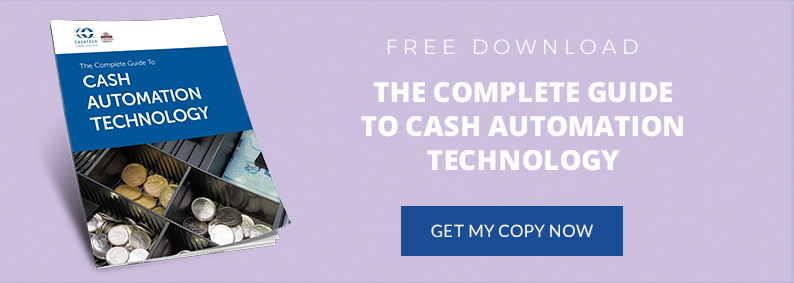Proper cash handling at your restaurant comes down to three things: trustworthy staff, accountability, and an effective cash handling policy. With these three things, your cash handling can go smoothly. Though you should expect to see minor cash handling mistakes in your restaurant if you handle cash manually, huge losses that hurt your profits are avoidable with the right cash handling procedures, like the ones below.
1. Limit Cash Handling Employees
The fewer people who handle your restaurant’s money, the better. Hiring trustworthy supervisors to handle the more sensitive cash handling activities is an important step towards effective cash management. This includes reconciliation, cash drops, vault deposits, and bank deposits.
The rest of the day-to-day cash management activities should only be handled by the manager and cashier on duty. Having too many people handling cash at any given time raises the potential for misplaced money and errors.
2. Separate Cash Management Duties
It’s a good idea to divide cash management activities among a few trusted employees. These activities include collecting cash, recording receipts, and reviewing transactions. Giving one person all of the control can increase your risk of error. Separating the duties at each stage is critical to increasing accountability, ensuring that mistakes don’t slip through the cracks.
If at all possible, have your servers take the orders, the cashiers collect the payments, the shift manager prepare deposits, and the bookkeeper reconcile the transactions.
3. Assign One Employee to One Cash Drawer
It’s quite common in the restaurant industry for waiters and cashiers to share cash drawers. They close each other’s tables when the assigned waiter is on break or has left for the evening. However convenient this may be, it negatively affects accountability. It’s best practice for each employee to be responsible for their own float and register.
4. Perform Regular Cash Drops
How much money you have in your cash drawer may vary depending on your restaurant’s cash volumes. However, your shift managers should be tasked with performing periodic cash drops in order to reduce overflowing cash drawers.
By regularly moving cash from the register to a more secure area, you can reduce your risk of misplaced money and increase your cash flow. The number of cash drops that should be performed on a daily basis can depend on the customer traffic in your restaurant.
5. Create Strict Rules for Discrepancies
As the restaurant owner, you can choose what happens when discrepancies are found while balancing the cash register.
Creating and following strict rules for discrepancies can make cashiers more aware while they handle your cash. You can decide on an amount of discrepancy that would require a write-up. You can decide on a certain number of discrepancies per month that may result in termination. Make the rules clear.
6. Track Your Cash Movements
Any time your cash is moved—from the manager’s hands to the cashiers’ hands, from the registers to the vault, from the vault to the bank—its movements should be tracked. You should know who moved what amount of cash, when, and where. This can increase accountability and help you reduce the risk of misplaced cash.
Tracking cash movements manually can be difficult. That’s why many restaurants are using cash management software. This software is integrated into the restaurant’s smart safe or currency recycler and helps you track, manage, and report on your cash automatically. You’ll always know how much cash you have, who performed cash management activities, and when. The software can even report on trends, so you’ll know how much cash you should keep on hand to meet demand from day to day based on historical data, for example. This can significantly help with cash flow issues since your money won’t be unnecessarily tied up in your registers.
7. Utilize Modern Technology
Unfortunately, the restaurant industry is fraught with cash handling inefficiencies and risks. But many of these challenges can be reduced with the use of cash management technology.
By investing in cash handling equipment for restaurants, including cash counters, banknote sorters, currency recyclers, and smart safes, you can increase accountability, increase accuracy, and reduce unnecessary losses.



